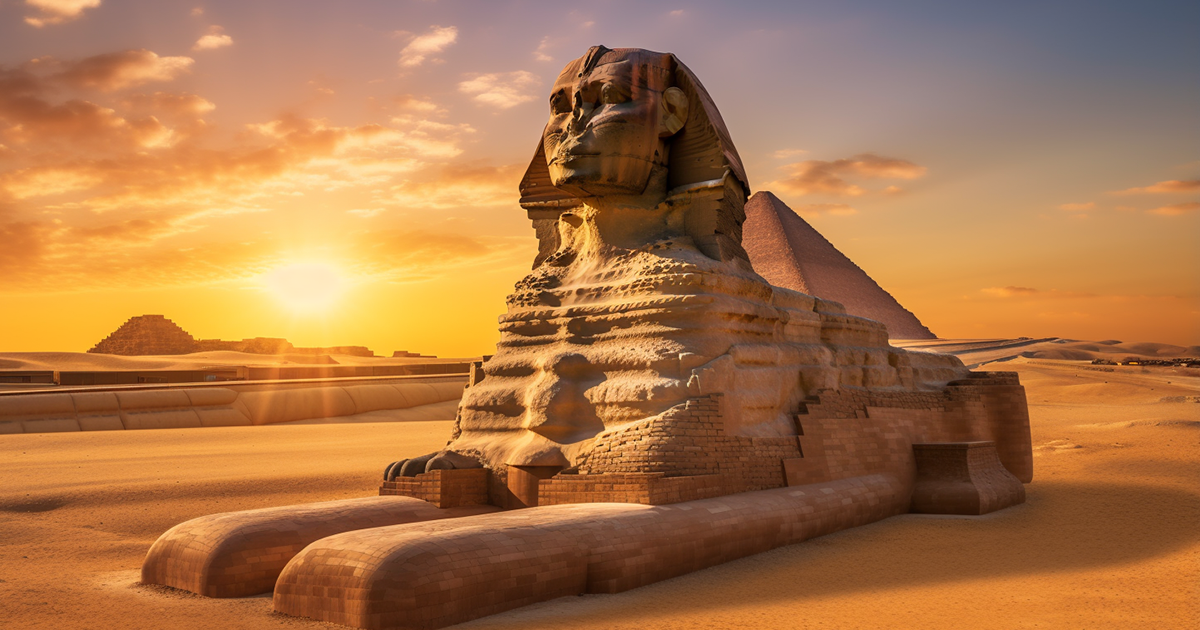Egypt evokes images of grand pyramids, ancient tombs, and captivating sculptures. Among these wonders lies the Sphinx, a monumental figure that has fascinated generations across the globe.
Perched proudly on the Giza Plateau, this majestic statue combines a lion’s body with a pharaoh’s head, shrouded in a veil of secrecy that has intrigued minds for centuries.
Situated on the western banks of the Nile River in Cairo, the Sphinx watches over the Giza necropolis, an ancient site dating back to Egypt’s Fourth Dynasty around 2,550 BC. Visitors flock daily to witness the splendor of the pyramids and the enigmatic Sphinx, a stone sentinel wrapped in myth.
One of the most striking aspects of the Sphinx is its sheer size. Stretching 240 feet long, towering 66 feet high, and spanning 62 feet wide, this colossal statue crafted from the natural rock of the Giza Plateau showcases the craftsmanship of ancient artisans.

Despite years of investigation, the Sphinx remains steeped in mystery. Archaeologists and Egyptologists have dedicated years to unravel its secrets, yet the Sphinx guards its enigmas with steadfast resolve.
The Sphinx’s prolonged burial beneath desert sands has hindered efforts to uncover its mysteries. Buried up to its neck for much of its history, the Sphinx concealed its truths, only partially revealed when Napoleon laid eyes on it in the 18th century, reigniting curiosity about ancient Egypt.
It wasn’t until the 1920s that a team led by archaeologist Emile Baraize successfully unearthed the Sphinx, unveiling its full grandeur to the world and reshaping our understanding of this ancient monument.
Archaeologists propose that King Chephren may have commissioned the Sphinx around 2,500 BC as part of his burial complex. However, debates persist about the true origins of this iconic figure.
References to the Inventory Stela, a stone detailing Pharaoh Khufu’s modifications to the Sphinx dating back 4,600 years, have further muddled the timeline of its creation.

Questions surrounding the Sphinx’s erosion patterns also puzzle researchers. Unlike typical wind erosion on the Giza Plateau, water erosion marks on the Sphinx suggest a period of wetter Sahara conditions, possibly dating back to the end of the last Ice Age around 10,000 BC.
This evidence fuels speculation that the Sphinx predates dynastic Egypt, hinting at a much older history waiting to be unveiled.
As scholars persist in studying this enigmatic monument, they aim to shed light on its true age and purpose, gradually unraveling the ancient secrets it guards.
Enjoy the Video Below:
Within Cairo’s ancient landscape, the Sphinx stands as a silent sentinel of time, offering a glimpse into Egypt’s obscured past. While its mysteries endure, the Sphinx continues to beckon those eager to understand the enigmas of this remarkable monument. With its majestic form and enigmatic gaze, the Sphinx remains a timeless source of awe and curiosity, inspiring us to explore the captivating puzzle of ancient Egypt.
